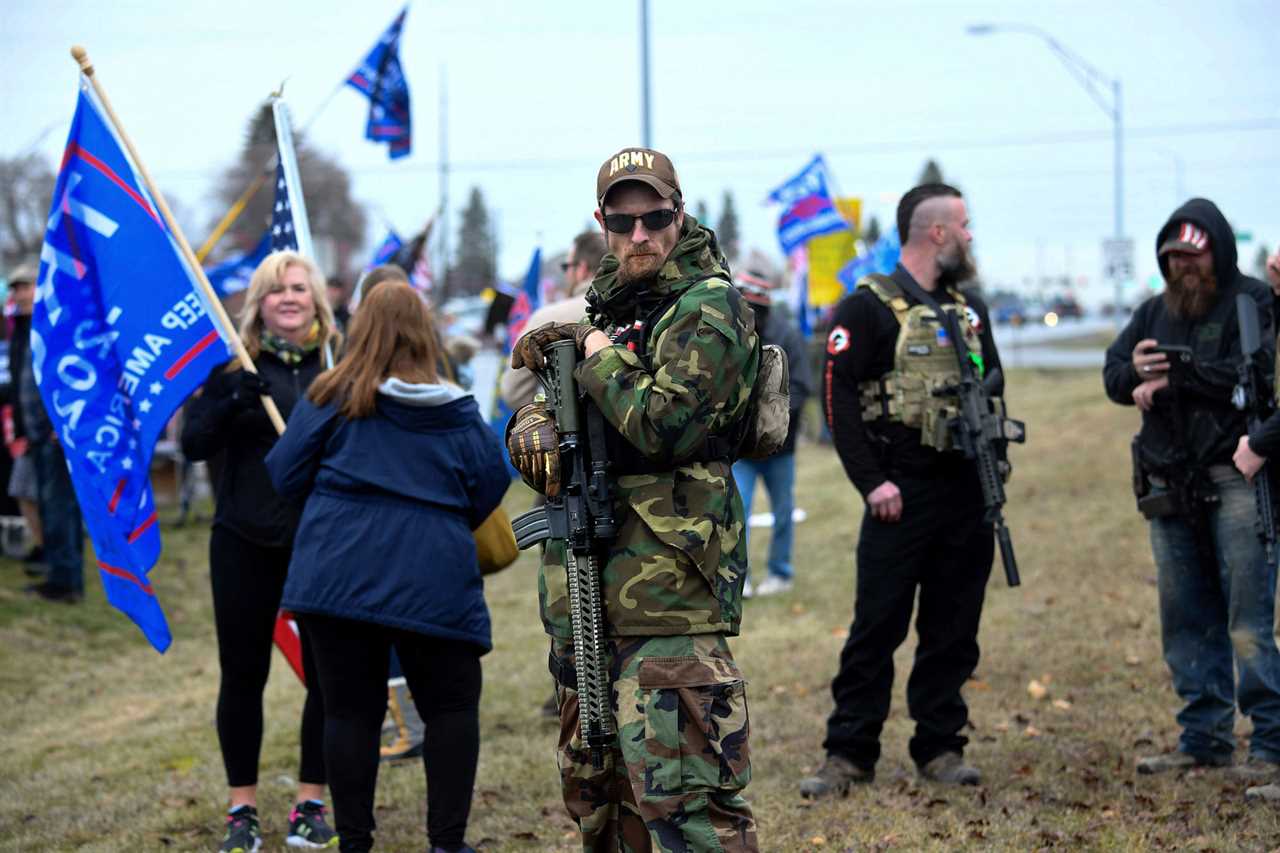
STAR, Idaho — The Republican primary for governor was still months away, but in the packed city hall chambers in this Oregon Trail town 18 miles west of Boise, the campaign was already heated.
Six candidates — two each for governor, lieutenant governor and secretary of state — had accepted the invitation from the county Republican women’s club to make their case to the 75 or so citizens who filled the folding chairs and stood at the back. Cowboy hats outnumbered face masks.
The stakes in Idaho’s primary next May are high: If it’s anything like every other statewide primary in nearly two decades, the Republican ballot will effectively decide the general election here in what the previous governor, Butch Otter, dubbed “the reddest of the red states.”
The candidates sitting at the mikes tussled over traditional Republican issues in some predictable ways, but they also spoke of dire challenges that might seem out of place in rural Idaho.
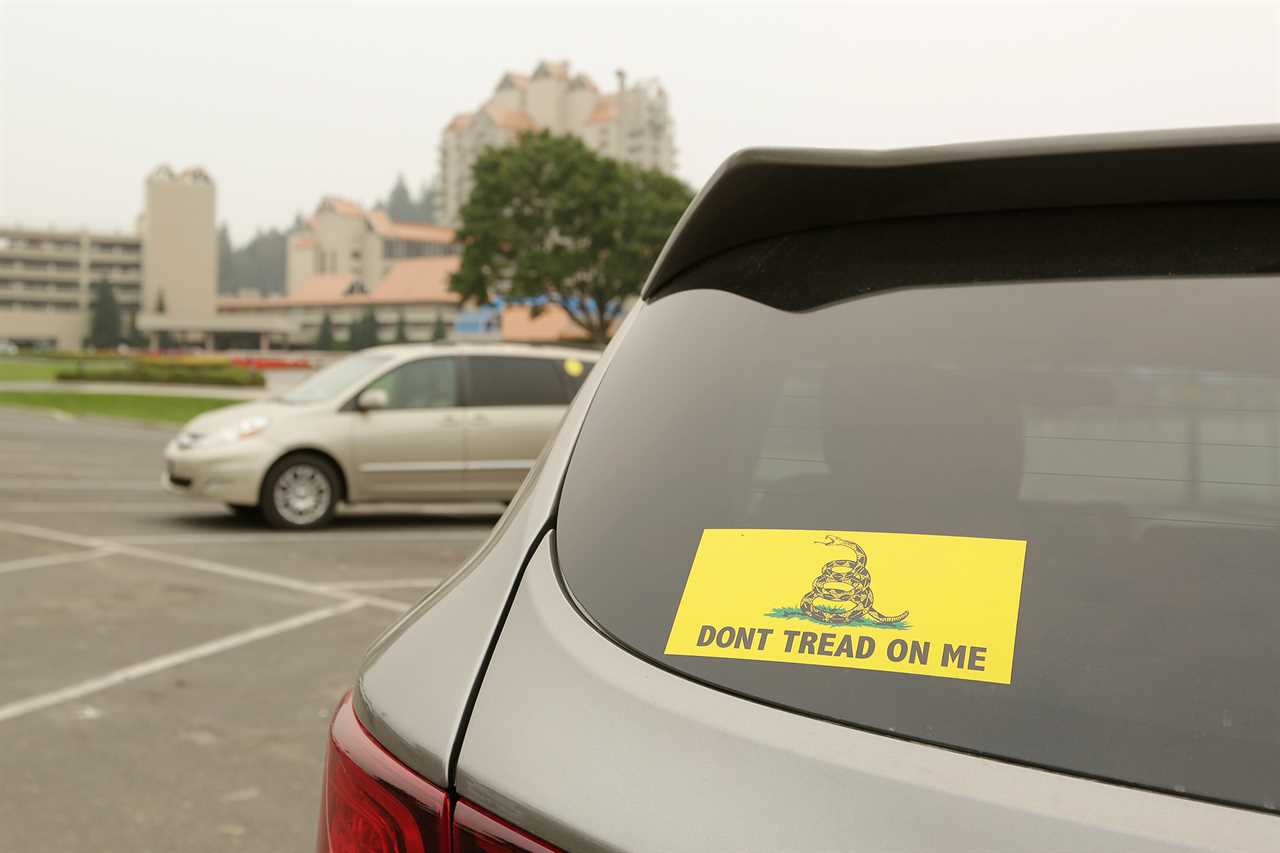
“We’re losing our freedom to foreign governments and foreign corporations,” said one dark-horse gubernatorial contender, a cowboy-hatted county commissioner from the state’s remote northern Panhandle. As evidence, he cited the $1.4 billion in pandemic assistance that Idaho had received from that “foreign” power, the U.S. government, as part of the Cares Act.
Another first-time candidate for governor urged a moratorium on resettling Afghan refugees in Idaho because “it’s the United Nations that’s driving refugee settlement, not the United States.”
As the forum progressed, the candidates directed their resentment and scorn not just at Democratic adversaries but at threats within the party — in particular, at the sitting GOP governor, Brad Little. Although Republicans dominate the state, these party stalwarts sounded strangely embattled and uneasy.
The fault lines became evident soon. A former ER nurse named Mary Souza from the northern city of Coeur d’Alene who’s running for secretary of state inveighed against a threat that might seem nearly as distant as the United Nations: election fraud. Then-President Donald Trump won almost 64 percent of Idaho’s votes in 2020, 5 points more than in 2016, and took all but three small counties. Nevertheless, Souza called “election integrity” the greatest challenge facing the state; she and many other Idahoans seem to believe Trump should have won more. “Raise your hand if you think the last election was fair and clean,” she called out. Only five or six hands rose.
Chad Houck, her opponent and the current secretary’s chief deputy, tried to set the record straight on the last election. He recounted how his office had hand-counted ballots for three counties and found vanishingly small discrepancies — just one vote in one of the counties. The real problem facing the GOP in Idaho, said Houck, is “divisiveness.”
Houck quit the race a few weeks later, opening up space for another mainstream candidate. But he delivered a warning in Star that still echoes in the march to the May primary: “The Idaho Republican Party is injured and kicking itself while it’s down. We’ve got a lot to do if we want to pull the Republican Party together and keep Idaho from shifting into purple and blue as other states have,” he said.
That threat, that ruby-red Idaho could somehow turn purple, may not be as far-fetched as it sounds. As recently as the mid-1990s, Democrats were still competitive in Idaho, even as many other western states, including Colorado, Nevada and New Mexico, were more strongly Republican. Those three are now blue spots on the electoral map.
Tom Luna, Idaho’s affable state Republican chair, notes two key similarities between those then-red states and today’s Idaho: Each was “a fast-growing state where Republicans were fighting with each other.”
Fast growth, driven by in-migration, is certainly at play in Idaho, one of the fastest-growing states in the country according to census data. But so is intraparty fighting, as anti-government militants and self-proclaimed, ideologically inflamed “political refugees” from the Left Coast collide with long-dominant traditional conservatives, and an ambitious lieutenant governor with a zest for pushing culture-war buttons tries to unseat a pragmatic governor struggling to bridge the gap.
Together, the growth and the fighting suggests the GOP in Idaho is both dominant — and fragile.
“There’s a civil war in the Idaho Republican Party,” said Idaho Democratic Party chair Fred Cornforth, who recently resigned due to a cancer diagnosis. “There are really three or four parties” under the uneasy Republican umbrella, he explained. “There are the populists — the ones making the most noise — and libertarians, moderates who’ve shifted right of center, meaning they aren’t really moderates any more, and Republicans who don’t recognize their party anymore and will drift over to voting Dem.”
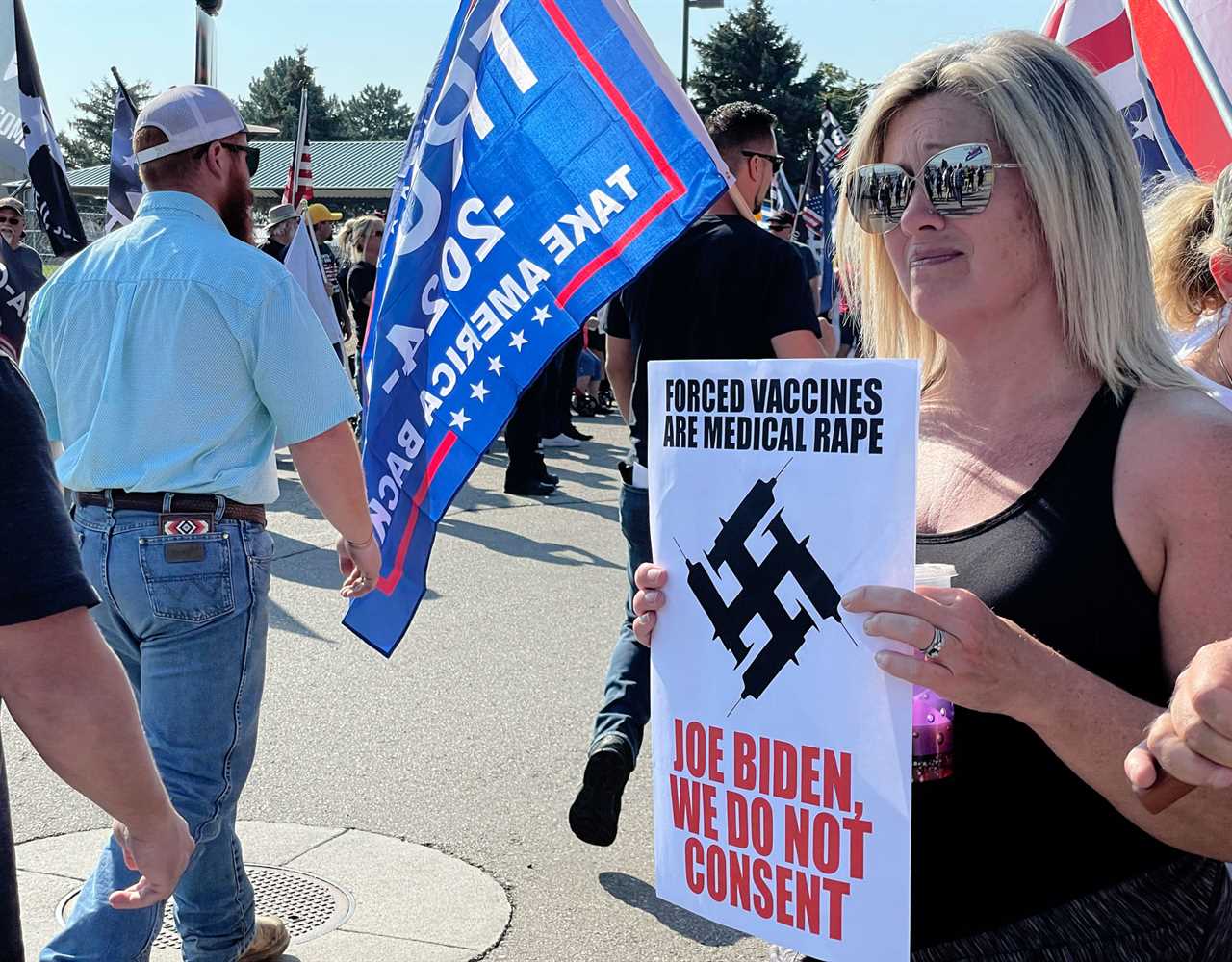
Chuck Malloy, a veteran Republican adviser-turned-columnist, streamlines that list. “I’ve been saying for a long time Idaho is a two-party state,” he told me. “The Republican Party and the More Republican Party.”
Republican chair Luna dismisses the term “civil war” but acknowledges that, after more than two decades of Republican dominance, dissatisfaction is rising within the ranks. “This will be a primary like we’ve never seen in Idaho,” he said.
Two of the heaviest hitters in the Republican primary races — Gov. Little and estranged Lt. Gov. Janice McGeachin, who’s challenging him for the top job — weren’t at the candidate forum in Star. Little hasn’t yet declared his candidacy for reelection, though he’s raking in campaign contributions, and McGeachin’s spokesperson told me she was “traveling around the state.” Nor was the other nationally prominent figure in the governor’s race, Ammon Bundy, the sagebrush rebel and serial occupier of government facilities. That’s because “he was not a registered Republican” when invitations were issued, a host told me. He still isn’t.
In a way, Idaho’s 2022 election season began in January 2019, soon after newly elected Gov. Little and Lt. Gov. McGeachin took office, when she launched what would become a campaign to upstage and undermine Little each time he left the state. McGeachin (pronounced “McGeehen”) started by posting a photo of herself posing in front of the state capitol with two members of the Three Percenters, a militia movement named for the debunked claim that just 3 percent of colonists fought in the American Revolution. She even swore several of them into the ranks and followed up by appearing with members of the John Birch Society and other far-right groups.
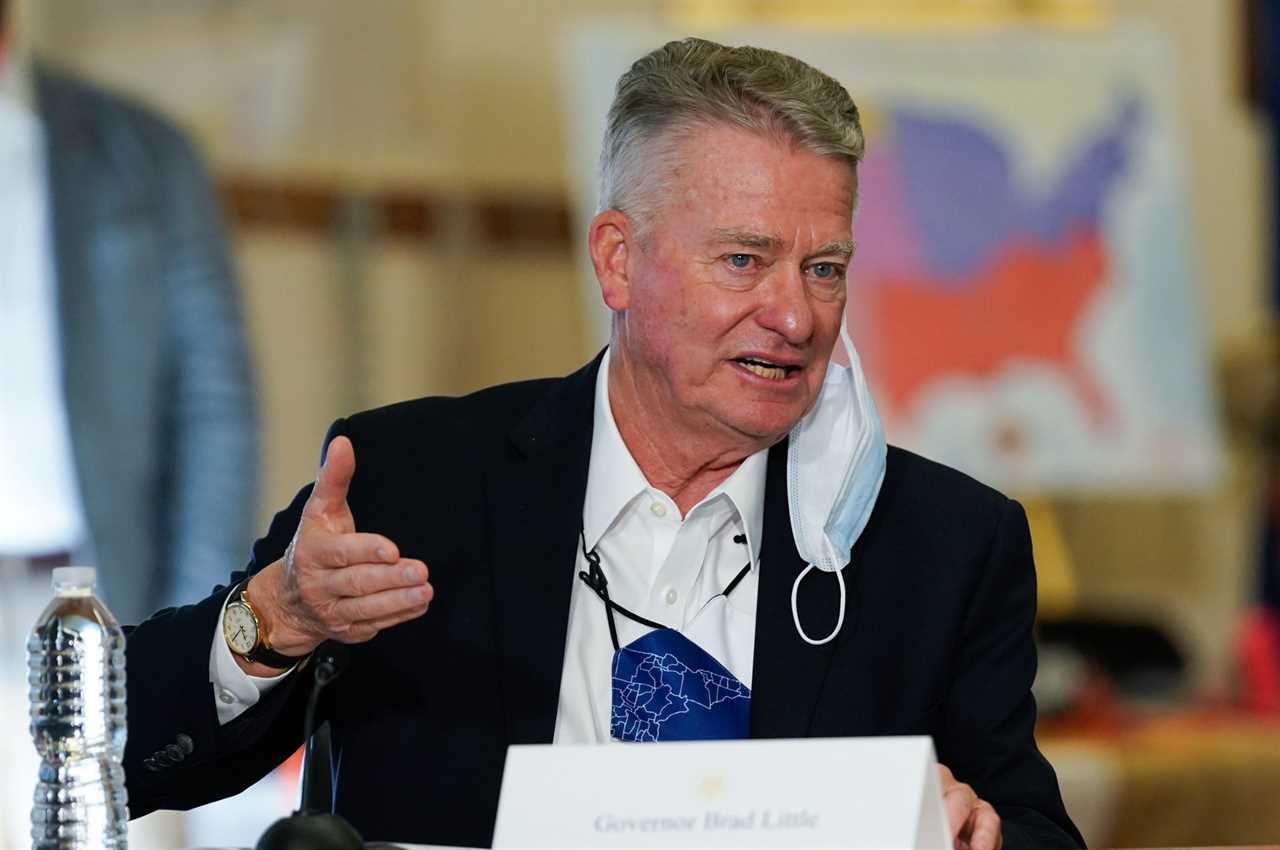
In spring 2020, when the novel coronavirus that she said “may or may not be” a pandemic hit, McGeachin loudly opposed Little’s emergency stay-home and business-closure orders. She blasted federal economic relief measures, but accepted forgivable Paycheck Protection loans for the transmission shops she and her husband own in Idaho Falls.
In May 2021, days after announcing her run for governor, McGeachin escalated. When Little left the state, she issued a sweeping executive order banning mask requirements, which he promptly rescinded on his return. When he left overnight in early October to join other governors on a photo-op tour of the Mexican border, McGeachin issued a new order banning mandatory vaccination and Covid testing and asked the Idaho National Guard about deploying troops to the border Little was touring. When he left again in early November, to attend a gala at Mar-a-Lago, Little did not even inform McGeachin.
Disputes between governors and their understudies aren’t unheard-of; in most states, including Idaho, governors and lieutenant governors run separately and can be of different parties. But Little and McGeachin (whom he supported in the 2018 primary) are both Republicans. So is everyone elected statewide post-2002, when a lonely Democrat won a single term as superintendent of public instruction. Republicans occupy 86 out of 105 legislative seats and compose the state’s entire congressional delegation.

As a party, Idaho Republicans should be sitting pretty. Under their leadership, the state’s economy has been red-hot. Luna recited the same litany of well-being twice in one interview: rapid growth (economic and demographic), low unemployment, a record budget surplus (boosted by pandemic largess from the much-resented federal government), “the biggest tax cut in state history, and the least regulation in the country.” He could add to that list top ratings for business-friendliness and creditworthiness.
So why are Idaho Republicans at each others’ throats? The intraparty divisions center on, and have been fanned by, two polarizing figures: McGeachin and Priscilla Giddings, a state legislator who’s been called McGeachin’s “de facto running mate.” Giddings has joined her at campaign events, and co-chaired McGeachin’s “Task Force to Examine Indoctrination in Idaho Education.” The task force failed to find the “teachings on social justice, critical race theory, socialism, communism, Marxism” it sought but did produce a spicy public-records scandal.
Giddings stirred even more controversy last spring when she “doxed” a 19-year-old statehouse intern who’d accused another right-wing legislator of sexual assault. Giddings called the legislator, a political ally who’s since resigned and been charged with rape, “Idaho’s very own Kavanaugh” and contended he’d been treated unfairly, since he was named and his accuser wasn’t. In November, the Idaho House reconvened in an unusual extended session and censured Giddings for the doxing and for “evasive, combative” testimony before an ethics panel.
It’s easy to dismiss McGeachin’s coup-for-a-day antics as showboating stunts aimed at pushing culture-war hot buttons and, as Malloy wrote in October, “bolstering a campaign that appears to be floundering, at best.” But the antics seem to work for the audience she wants to reach; as Malloy told me, “her base loves it.”

So, it seems, does Trump. On Nov. 9, he injected himself into Idaho’s politics, as he has into so many other states’, and gave McGeachin his “Complete and Total Endorsement to be the next Governor of Idaho.” That he would find her simpatico is unsurprising: McGeachin endorsed Trump early in 2016 and served as his Idaho Team vice chair and, in 2016 and 2020, as a Trump delegate to the national convention. She visited Mar-a-Lago twice last year — the second time just eight days before the endorsement, which she prefigured with a press release.
What’s more surprising is that Trump chose Little as the first sitting Republican governor to try to unseat. Ohio’s Gov. Mike DeWine, who acknowledged Biden’s 2020 victory and castigated Trump for “pouring gas on the fire” on Jan. 6, might have seemed a likelier target, especially after Trump warned in a tweet last November that DeWine’s seat would be “hotly contested” in 2022. By contrast, Little never challenged Trump. He even made his own pilgrimage to Mar-a-Lago. “It was an honor to be recognized by the 45th President of the United States,” Little tweeted afterward. “Together we were able to accomplish many great things!” Four days later, Trump backed McGeachin.
McGeachin may not be the last Idaho primary challenger to receive Trump’s benediction. Giddings’ doxing scandal may prove disqualifying even for Trump. But Bryan Smith, an Idaho Falls attorney and party activist trying for the second time to unseat 11-term congressman Mike Simpson, is one to watch for on the Mar-a-Lago guest list. Smith touts his role as a Trump convention delegate (not noting that this was in 2020; he was a Cruz delegate in 2016) and paints himself as a “hard-nosed political outsider who will fight for our conservative values” against the “anti-Trump, career politician Congressman Mike Simpson.” Simpson famously called Trump "unfit to be president” in 2016, then in 2021 broke ranks to support the House investigation of the January 6 events.
“That would be reason to cause President Trump to want to endorse me,” Smith told me, noting also his steady support for Trump’s “America First agenda,” the $200,000 he’s raised, and what he claims is a widespread sense that Simpson has “been there too long.”
Such exasperation reflects another fault line underlying the political divide — a kind of generational divide based on how long people have been in Idaho. The “civil war” isn’t just a more-conservative-than-thou race to the right, or even a battle over who is Trumpier; it’s also a collision between an older, cozier “good ol’ boy” Idaho, where everyone knew not just everyone else but their fathers and grandfathers too, and one of the new Idahos now taking shape.
Brad Little embodies the old Idaho. He’s a third-generation sheep and cattle rancher (his grandfather was the “Idaho Sheep King”), one of the state’s largest landholders, and a former state senator (as was his father) and lieutenant governor. He also chaired the powerful Idaho Association of Commerce and Industry. Tall and rangy, with a wide grin and famously amiable manner, he looks as though he just stepped off a Western movie set.
Before pandemic politics inflamed tempers and gave McGeachin an opening, Little’s conservative credentials seemed nearly impeccable. Now he’s lambasted on the right as a “deep state RINO.” Public-health advocates complain about his failure to issue mask or vaccine mandates — Democrat Cornforth calls him “Governor Dolittle” — but public-health bashers decry his refusal to bar schools and local jurisdictions from imposing their own orders, and even today rail about the stay-at-home order he issued in early 2020.
Like any populist or radical movement, Idaho’s pitchfork politics are a quest for authenticity. By their lights, Little and his fellow establishment Republicans (to say nothing of libs and Dems) have betrayed not just the Trump revolution but some sort of authentic, real Idaho.
That’s the premise behind the most memorable slogan this campaign cycle has produced: “Keep Idaho Idaho,” Bundy’s bumpersticker motto. Bundy first gained national notoriety in Nevada in 2014 when he helped lead a standoff against federal officials trying to seize cattle owned by his father, Cliven Bundy, for unpaid grazing fees of $1.2 million. He gained more when he led the armed occupation of the Malheur Wildlife Refuge in Oregon in 2016. He brought the same confrontational style to Idaho when he led protests against Little’s emergency masking and distancing rules during the first pandemic surge, including one at a police officer’s home and two forceful intrusions on the state Capitol. Those led to his being wheeled out on a chair he’d roped himself to and banned from the Capitol for a year. They were the first in an ongoing wave of intimidating armed protests by various militias and other right-wing groups at local government offices, school board meetings and officials’ homes around the state.
Such ructions seemed far away, and a nostalgia-limned real Idaho very near, as I drove a winding country road lined by bare-branched orchards and cottonwoods still glimmering in autumn gold to Bundy’s place outside the agricultural town of Emmett. As it happens, Emmett, an hour northwest of Boise, is also the ancestral and current home of Brad Little, who keeps an apartment in Boise for his day job. His vast rangeland includes the ridge behind Bundy’s more modest spread.
A weathered wheelbarrow, tilted picturesquely, marks the entry to Bundy’s drive. A green hammock hangs a few yards further up, in front of an apple orchard heavy with unpicked fruit. The house above is spacious but not fancy, with a grand piano set against a picture-window view of the irrigated Emmett Valley and dry hills beyond. Bundy wore jeans, a heavy brown flannel shirt with Western snaps, and his trademark cowboy hat. (Bad form at the table, one daughter of an Emmett ranching family told me, but then, contrary to what national media often presume, Bundy’s not a rancher; he was in the vehicle fleet maintenance business before selling his companies to devote himself to activism and politics.)
We sat at a picnic-style dining table — big enough for his six children — covered by a vinyl tablecloth. Bundy pulled pocket editions of the U.S. and Idaho constitutions from his shirt and slapped them down like a poker player showing his hole cards. He referred to them occasionally but more often quoted from memory. His voice rose as he invoked the First Amendment and “the Idaho Constitution, Article 1, Section 4, ‘The exercise and enjoyment of religious faith and worship shall forever be guaranteed,’” to denounce the arrest of unmasked churchgoers who defied Little’s spring 2020 emergency order restricting public gatherings. “Anybody who is OK with that is my enemy.”
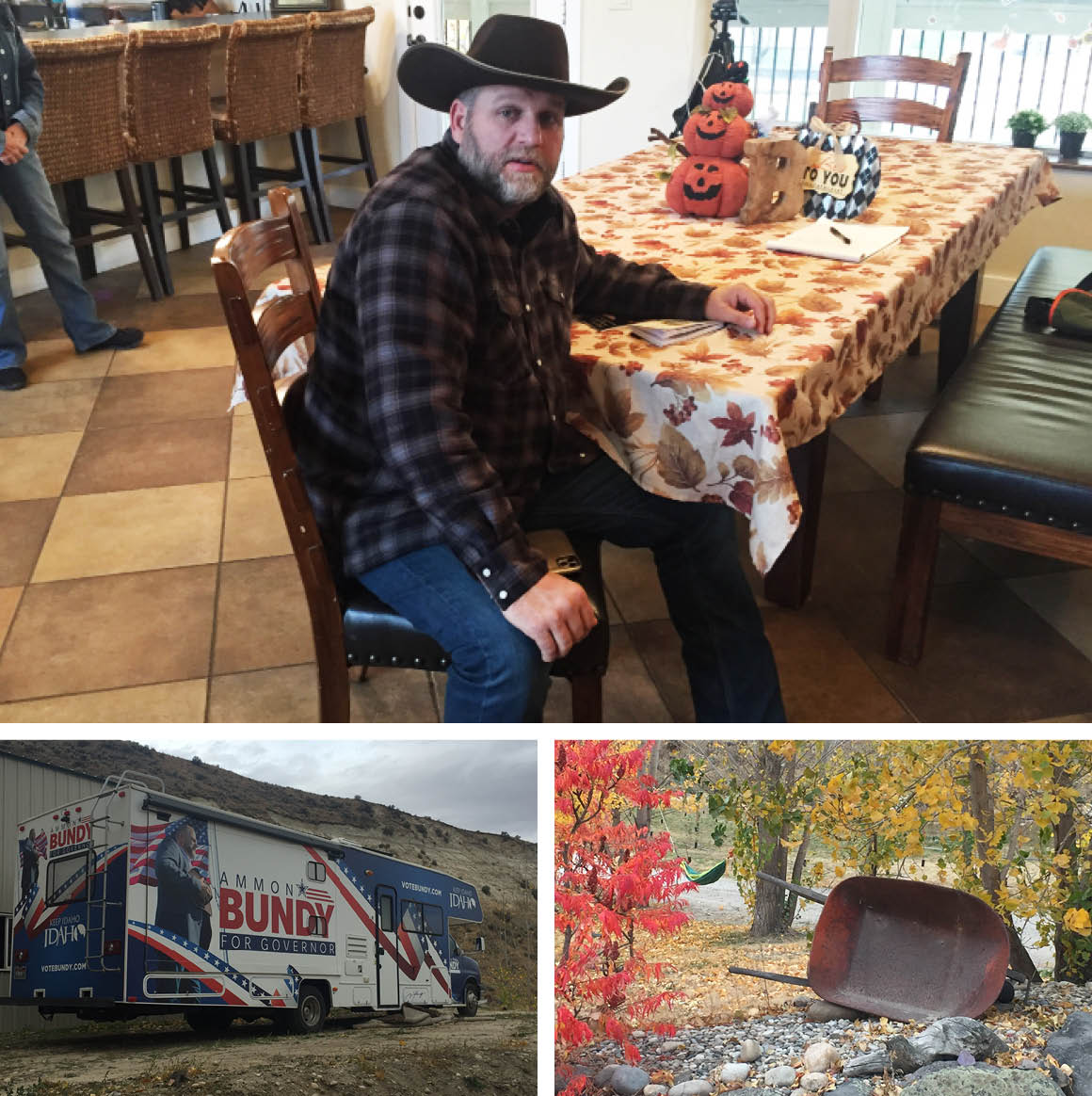
Nevertheless, Bundy dismissed McGeachin’s governor-for-a-day anti-mandate orders as “a political gimmick. The only one they benefit is her.” What would he have done in her place? “I would have done what I did do, rally the people. I would have used the office of the lieutenant governor to unite the legislature to end the [governor’s] emergency order.” As governor, he added, he would focus on downsizing the executive agencies and “restoring power back to the legislature,” where it belongs. But without appearing to see a contradiction, he said he would do so by executive fiat: “I think I could spend four years doing that and not have to deal with the legislature at all.”
In Idaho as elsewhere, Republicans tend to extol “local control” rather than high-handed state and federal directives. But that principle tends to hold only as long as local governments do what conservatives want. Boise, for example, elected its city councilmembers at large, which reinforced its Democratic-leaning majority. So in 2020 Republican legislators passed a law ordering all cities with more than 100,000 residents — which then meant only Boise — to hold district elections, in hopes of capturing some seats. This may have unintended consequences: Two Republican-dominated cities in the Treasure Valley, Meridian and Nampa, have since passed the 100,000 threshold.
Bundy, however, leapfrogs over this contradiction. When I asked him if local control meant school boards and cities should be free to adopt Covid restrictions, he responded in classic libertarian fashion: “The primary local control is the individual, over his own life and body. ... There’s no role of a city to come in and say, you can’t come out of your homes unless you wear a mask.”
Still, there’s something inconsistent about his “Keep Idaho Idaho” slogan. He proposes to restore the original Idaho, to rescue it from the likes of third-generation Idahoan rancher Brad Little. But Bundy himself only moved to Idaho six-and-a-half years ago; he grew up on his father’s ranch in Nevada, then lived in Phoenix. “The city had grown up around us” there, he explained. “I just didn’t want to raise my children in the city.” He and his wife visited state after state seeking a new home that, as he put it, still “believes in freedom.” But, he laments, “the whole West” is changing. “I grew up in Nevada. I never thought it would be predominant Democrat.” Even “Utah has its struggle right now. It’s converting over. In Salt Lake there’s a gay mayor. Which is fine, but …”
When the Bundys reached Emmett, they knew “it was the place we needed to be.” Idaho “is a beautiful land, but it’s also a beautiful idea. ... Idaho is basically what the United States was.”
No one seems to expect him to win the primary; according to one political operative, an unreleased Republican poll showed him with single-digit support, McGeachin in the low 20s (pre-Trump endorsement) and Little above 60 percent. Bundy’s brother Ryan, running as an independent for governor of Nevada in 2018, won just 2 percent of that vote.
Even if Bundy were somehow nominated, he might not get help from the party. “We’ve got to unite around whoever wins the nomination,” Luna told me. Even if it’s Bundy? Luna’s expression darkened. “He’s not a Republican.”
“He’s right, I’m not the Republican they are, that is for danged sure,” Bundy responded. “I never will be. I’m going to give the people of Idaho a decision … are you Republican or are you conservative? ’Cause they’re not the same thing, especially in Idaho right now.”
Newcomer that he is, Bundy represents a demographic trend that is transforming politics and life in the Gem State. Call it “right flight.” From the 1950s through the 1980s, California was what would now be called a purple state; it elected Republican governors half the time and voted R in nearly every presidential race. Since then, California has turned deep blue; Republicans’ loss there has been red Idaho’s gain. Fueled by migration from California and, to a lesser extent, Washington and Oregon, Idaho’s population has soared since 2015, rising faster than any other state’s.
This growth has been concentrated in Boise and the sprawling, conservative suburbs and exurbs west of it — places such as Star, population 11,000, roughly twice what it was 10 years ago, and Meridian, the state’s second-largest city, which grew 1,157 percent, from fewer than 10,000 to nearly 120,000 residents, between 1990 and 2020. Population has also surged in the far northern Panhandle, which stretches up to the Canadian border. In the heyday of unionized mining and timber industries, the north was the state’s most Democratic region. Now it’s an incubator of armed militias and fiercely ideological local politics and the center of the decade-old Redoubt Movement, which promotes the Inland Northwest as a conservative Christian refuge.
Republican migrants to Idaho outnumber Democrats about two-to-one, according to a statewide annual survey of public attitudes conducted at Boise State University. Rather than importing the liberal politics of the coastal cities they’ve left, many bring smoldering resentment of government regulation and “socialism.” “They want to make sure people here know how evil liberals are,” says Alicia Abbott, a political independent in Sandpoint, the largest town in far-northern Bonner County. She’s doing voter outreach for 97 Percent, an effort to counter the Three Percenters’ armed extremism.
Those who fear and those who cheer the effects of right flight agree on one point: The newcomers are pushing Idaho politics farther to the right. Like Bundy, they bring a convert’s zeal for the hallowed rugged individualism of their new home. “New to Idaho, true to Idaho,” proclaims the influential Idaho Freedom Foundation, which vets legislation and legislators for their conservative correctness. “Are you a refugee from California, or some other liberal playground? Did you move to Idaho to escape the craziness?” its website says. “Welcome to Idaho.”
A thriving local “preparedness real estate” industry is cashing in on right flight. One broker, Todd Savage of the “PATRIOTS ONLY real estate firm” Black Rifle Real Estate and a self-proclaimed “conservative libertarian” refugee from San Francisco, had to revise a listing that read, “This property is for sale to Liberty / Constitutional Buyers ONLY” because the Multiple Listing Service thought it suggested bias against immigrants. No big deal, Savage told me: “Business is fantastic! This whole pandemic thing has really fueled land ownership in rural areas. A lot of my clients are in police, fire, and medical fields. They are coming here in droves. They don’t care about real estate prices. They have money to burn.”
Luna likewise speaks of sending out the “political welcome wagon” to these new Idahoans, to make sure they don’t get the wrong idea about Republicans: “We want to make sure the first time they hear about the Idaho Republican Party, it’s from one of our volunteers, not on TV or in the newspapers.”
The question is, which Republican Party? The power centers in Boise and the Panhandle are not moving in step. The rift opened publicly in July when the Kootenai County Republican Central Committee unanimously passed an effusive resolution endorsing the John Birch Society and urged the state party to adopt it too. (It refused.) The Kootenai resolution also urged those “who do not support our party platform to follow the example of Bill Brooks, and voluntarily disaffiliate from the Idaho Republican Party.” Brooks, a Kootenai County commissioner, quit the party to protest its cozying up to the Birchers, though he still considers himself a staunch conservative. He sees it as symptomatic of a broader shift: “We came here 20 years ago because it was the closest thing we could find to Norman Rockwell,” he told me. “Now people come looking for George Lincoln Rockwell” — the founder of the American Nazi Party.
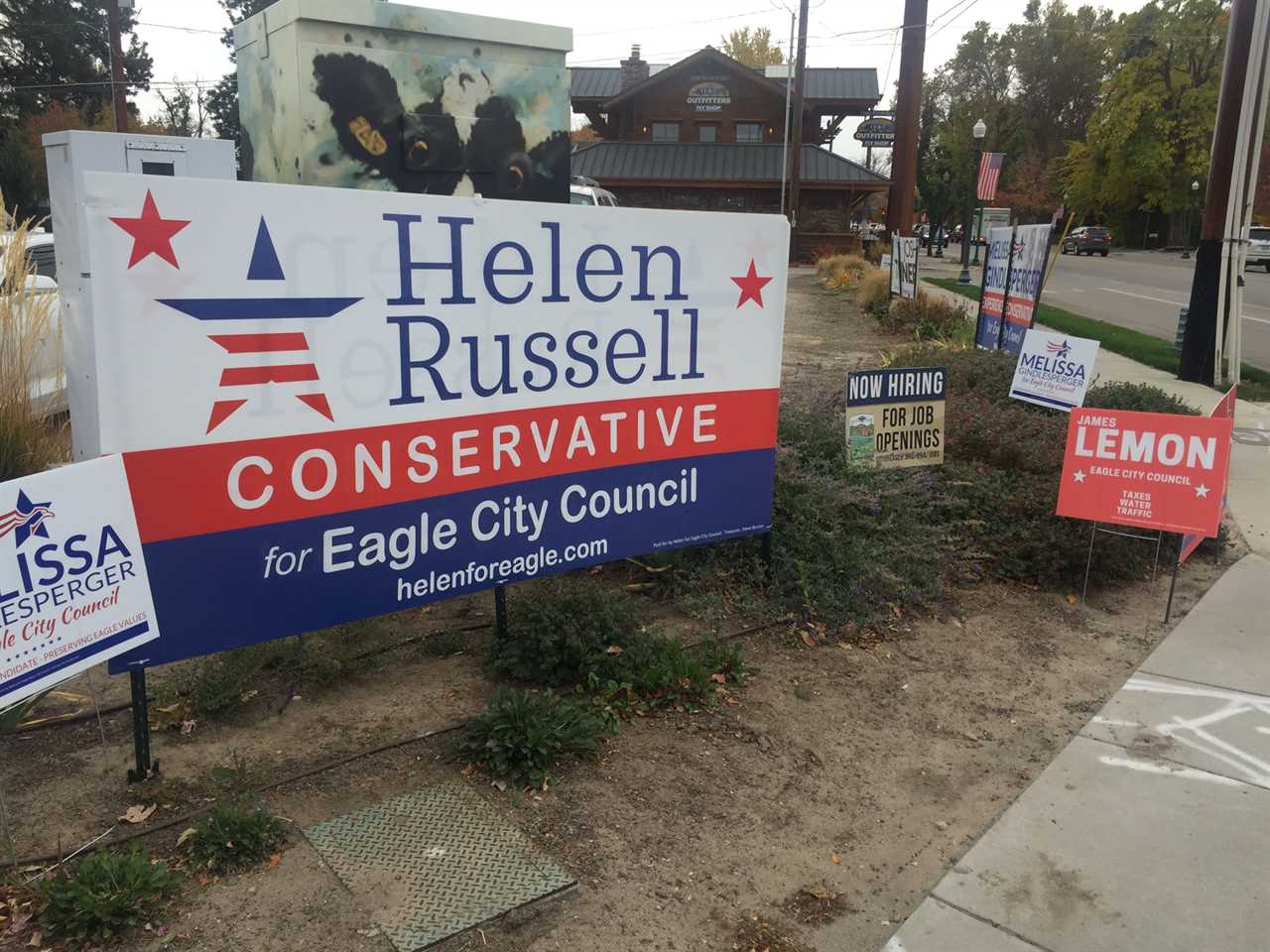
The newcomers may denounce the cities they’ve left, but they bring a combative, impatient post-urban edge to once-mellow Idaho, an impatience that shows in politics as in the increasingly congested traffic in Idaho’s fast-growing cities.
Chris Fillios, who serves with Brooks on the Kootenai County Commission, feels the heat. Unlike Brooks, he’s stayed in the Republican Party, even though he says he’s “been called communist, Marxist, socialist.” It’s not his politics that have changed, suggests Fillios, who’s lived in Idaho for 21 years and spoke at the first local Tea Party rally. It’s the party. “It’s a psychological mass movement. People are coming here for ‘freedom,’ thinking, ‘I don’t have to mask, I don’t have to be nice.’
“Most people don’t understand that we control only the county departments’ budgets,” he continued. “They think we’re legislators. They want to know where we stand on gun rights and abortion. They want us to reflect their values.”
Fillios succinctly summed up his party’s paradoxical predicament: “We’ve become so politicized with this single-party dominance.”
----------------------------------------
By: Eric Scigliano
Title: The Republican War Over a Republican State
Sourced From: www.politico.com/news/magazine/2022/01/18/republican-infighting-idaho-527190
Published Date: Tue, 18 Jan 2022 04:30:17 EST
Did you miss our previous article...
https://consumernewsnetwork.com/politics-us/-where-mlks-vision-is-starting-to-be-realized






